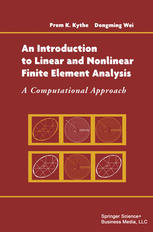

Most ebook files are in PDF format, so you can easily read them using various software such as Foxit Reader or directly on the Google Chrome browser.
Some ebook files are released by publishers in other formats such as .awz, .mobi, .epub, .fb2, etc. You may need to install specific software to read these formats on mobile/PC, such as Calibre.
Please read the tutorial at this link: https://ebookbell.com/faq
We offer FREE conversion to the popular formats you request; however, this may take some time. Therefore, right after payment, please email us, and we will try to provide the service as quickly as possible.
For some exceptional file formats or broken links (if any), please refrain from opening any disputes. Instead, email us first, and we will try to assist within a maximum of 6 hours.
EbookBell Team

5.0
48 reviewsAlthough finite element courses have become more popular in the undergraduate and graduate engineering, science, and applied mathematics curricula, there are very few introductory textbooks geared toward students accustomed to using computers for everyday assignments and research. 'An Introduction to Linear and Nonlinear Finite Element Analysis' fills this gap, offering a concise, integrated presentation of methods, applications, computational software tools, and hands-on programming projects. Suitable for junior/senior undergraduate and first-year graduate courses, the book is aimed at students from a variety of disciplines: engineering, physics, geophysics, and applied mathematics.
Unlike existing texts designed with specific applications to a particular field of mechanical, civil, or chemical engineering, the emphasis here is on interdisciplinary applications. One- and two-dimensional linear and nonlinear initial/boundary value problems are solved using finite element, Newton's, and conjugate gradient methods. Mathematical theory is kept to a minimum, making the text accessible to students with varied backgrounds.
Features:
* Software tools using Mathematica, Matlab, Fortran, and commercial finite element codes, such as Ansys, integrated throughout the text * Numerous examples and exercises with diverse applications to linear and nonlinear heat transfer, fluid flows, mechanical vibrations, electromagnetics, and structures * Supporting material and selected solutions to problems available at the authors' websites: and * Minimal prerequisites: a course in calculus of several variables, differential equations and linear algebra, as well as some knowledge of computers
Primarily a classroom resource, the book may also be used as a self-study reference for researchers and practitioners who need a quick introduction to finite element methods. P>